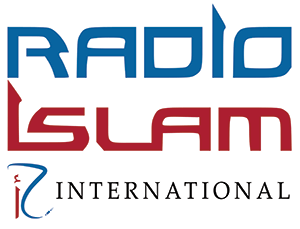Sameera Casmod | sameerac@radioislam.co.za
17 February 2025 | 13:45 CAT
3-minute read

Sednaya Prison looms seemingly unimposing on the top of a hill in an area 30km north of Damascus (Image: Radio Islam International)
Sednaya Prison, Sednayah, Syria– The Radio Islam International team, in collaboration with Jamiatul Ulama South Africa undertook a journey into Syria last week to discover the situation on the ground and find out what the lives of Syrians are really like since Assad’s fall in December 2024.
The team visited Sednaya Prison, also known as the ‘Human Slaughterhouse’, which was established in the early 1980s about 30km north of Syria’s capital city, Damascus to hold opponents of the Assad family.
Since the start of the Syrian civil war in 2011, thousands of people are said to have been detained, tortured and executed at Sednaya.
“Radio Islam [entered] this chilling facility [and experienced] firsthand the extreme evil it represented. In this line of rooms, we see piles of clothes of inmates, evidence of the number of detainees who were stuffed into these cells and the spontaneity of what occurred when they were dramatically freed from this prison last December,” Radio Islam correspondent, Moulana Ebrahim Moosa describes.

Clothes strewn on the floors of above-ground prison cells in Sednaya
Despite being permanently closed, the corridors of the prison still echo with the cries of inmates who were held and tortured within its perimeters. It still resembles a crime scene and bears evidence of holes hastily dug to free prisoners below ground soon after Hayat Tahrir al-Sham liberated the land. The layout of the prison had always been a closely guarded secret, and people who initially entered the prison were unable to reach prisoners in the facility’s hidden underground levels.

The crime scene bears evidence of people desperately trying to reach prisoners in inaccessible, hidden, underground tunnels
The team describes the dismal, dark and desolate atmosphere of a wing that appears to have been used to place detainees in solitary confinement.
“…underground, in absolute darkness… The thick black cobwebs on the roof still present accentuate the sense of dread, and the cold bites at one’s bones. This was no doubt a place designed to destroy the human being and cause inmates to lose their minds,” Moulana Moosa says.

Thick black cobwebs line the corners of the bare cells, clinging to the damp, crumbling walls. The air is heavy with the stench of decay, and the cold, uneven floor is littered with remnants of torn fabric—silent witnesses to the unspeakable horrors that once occurred here.
The footage is shocking. There are small, bare cells, the walls of which are covered in inscriptions. A dirty, tiled area in one part of the cell tells of inconceivable human suffering.
“Every inscription tells of deep anguish, longing, and hope in Allah.”
“Ya Rabb,” “Amanatullah,” “Ya Kareem,” and “Ya Allah,” are the words repeatedly inscribed on the walls, a testament to prisoners’ unshaken faith in the face of extreme pain and suffering.

The words Allah repeatedly inscribed on the walls tell of an unshakable faith in a cold, dismal world of untold horrors
On the opposite side of the prison, there is overwhelming and disturbing evidence of torture, including a hydraulic press that was reportedly used to crush bodies, and a butcher-style saw that was possibly used to dismember inmates and dispose of them.

 A hydraulic press, reportedly used to crush bodies, and a butcher-style saw, that was possibly used to dismember inmates, were discovered in the prison.
A hydraulic press, reportedly used to crush bodies, and a butcher-style saw, that was possibly used to dismember inmates, were discovered in the prison.
“Just visiting the Sednaya prison is a haunting experience that leaves you numbed and at a loss for words. Considering the gravity of injustices that took place on these grounds is too overwhelming to fathom.”
The entrance of the prison is filled with photographs of missing persons, individuals last rumoured to have entered the facility but remain unaccounted for to this day. Relatives remain hopeful that their loved ones are still alive, but fears persist that they may be among those killed in Sednaya, where an estimated 50 people were executed daily.

Posters of missing persons line the entrance of Sednaya Prison, each one a silent testament to families who searched for loved ones they believed were held inside—only to find no trace of them. Yet, hope persists that they may still be found alive.
“There was one ayat of the Qur’aan that played in my mind all the time,” Moulana Bilal Vaid says. The ayat is from Surah Ibrahim, verse 42 وَلَا تَحْسَبَنَّ ٱللَّهَ غَـٰفِلًا عَمَّا يَعْمَلُ ٱلظَّـٰلِمُونَ ۚ إِنَّمَا يُؤَخِّرُهُمْ لِيَوْمٍۢ تَشْخَصُ فِيهِ ٱلْأَبْصَـٰرُ which translates to “Do not think ˹O Prophet˺ that Allah is unaware of what the wrongdoers do. He only delays them until a Day when ˹their˺ eyes will stare in horror—.”
Syrian citizens have expressed profound relief at the fall of the Assad regime, marking the end of Sednaya Prison—long notorious as a centre of torture and suffering. For many, the mere closure of this brutal facility stands as a significant victory, symbolising the first step toward justice and rebuilding their nation.
Listen to the full report on Sabaahul Muslim with Moulana Sulaimaan Ravat.
Watch the full video Inside Sednaya Prison.








0 Comments